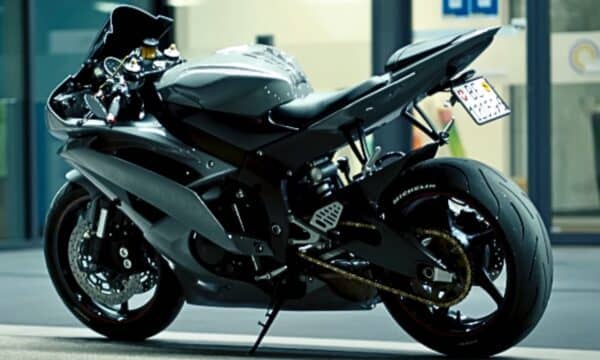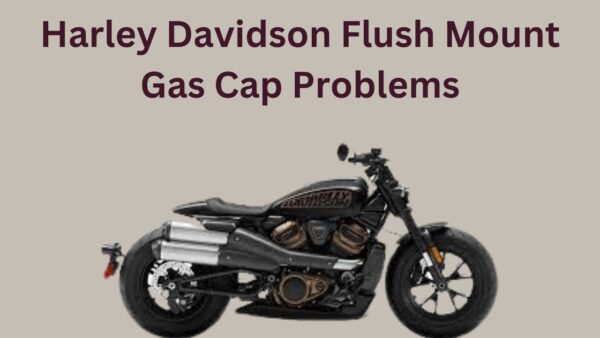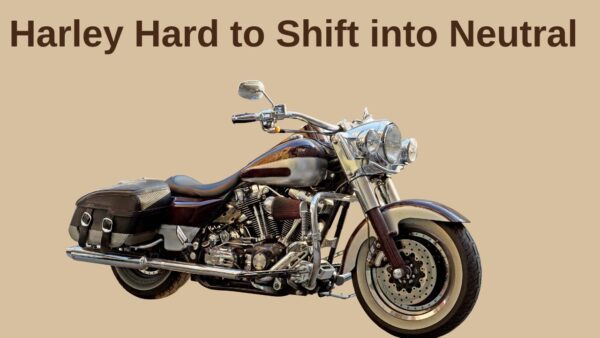I’ve recently noticed a problem with my Yamaha R6: it’s not starting. This seemingly simple issue can be incredibly frustrating, especially when you’re all set for a nice ride.

In this article, I will explore possible reasons for the problem and walk you through some steps that may help get your R6 up and running again.
Let’s dive in!
How to Fix the Yamaha R6 Not Starting Problem?
Your Yamaha R6 will not start due to battery issues, cold weather, spark plug issues, fuel issues, compression issues, ignition system, sensor issues, fuel injector issues, coolant leaks, or electrical issues.
Related: Is Yamaha R6 Good Starter Bike
1. Battery
One common reason why your R6 might not be starting could be due to an issue with the battery.
Over time, the battery can deplete, especially if the motorcycle is not used regularly or is stored in cold conditions.
The ignition system will not have enough juice to start the engine without sufficient power. In order to confirm this, you can check the battery voltage using a multimeter.
If the voltage reads below 12.6 volts when the motorcycle is off, the battery will likely need to be charged or replaced.
Here is how you can fix it:
- Remove the battery from its compartment
- If the battery voltage is low, try charging it using a motorcycle battery charger. If, after charging, the battery still doesn’t hold a charge, it probably needs to be replaced.
- When purchasing a new battery, ensure it’s compatible with your R6 specifications.
- Install the new battery carefully, ensuring to connect the positive (+) terminal first, followed by the negative (-) terminal.
- Once installed, start your motorcycle to check if the new battery has resolved the issue.
2. Spark Plugs
The R6, like any combustion engine, requires spark plugs to ignite the fuel-air mixture in its cylinders, thereby starting the engine.
If your motorcycle isn’t starting, one possible cause might be faulty or worn-out spark plugs.
Over time, spark plugs can degrade, which leads to weak or inconsistent sparks and can prevent your motorcycle from starting.
In order to fix it, you’ll first need to remove and inspect the spark plugs. And then, look for any signs of wear, such as a worn-out electrode or a build-up of dirt or carbon deposits.
If the spark plugs are noticeably worn or dirty, they will need to be replaced. You should start by removing the old plugs using the socket and ratchet.
Once removed, insert the new spark plugs, but avoid overtightening them, as they can damage the engine. Finally, reconnect the spark plug wires.
3. Fuel Delivery
Another common reason might be starting due to a problem with the fuel delivery system.
The fuel delivery system in your motorcycle is responsible for supplying the engine with the fuel it needs to run. If there’s an issue, your motorbike might not start.
So, you should verify that there’s enough fuel in the tank. An empty or nearly empty tank can prevent the bike from starting.
Second, you should check for clogged fuel lines. Over time, debris can accumulate in the fuel lines, restricting the flow of fuel to the engine.
If you suspect this is the problem, you’ll need to clean or replace the fuel lines. Next, inspect the fuel pump; if it’s faulty, it might not be able to supply enough fuel to the engine.
If you’re not getting any fuel out of the fuel pump when you try to start the bike, it’s likely the pump is the issue. In this case, you’ll need to replace it.
4. Compression
One another common culprit is compression; compression refers to the action inside the engine, where a mixture of fuel and air is squeezed in a confined space, creating a spark that starts the engine.
If there’s a compression issue, it means that this necessary spark isn’t happening effectively.
There are a few possible reasons for low compression. The most common are worn-out piston rings, a damaged cylinder, or problems with the valves.
A simple test for compression is to use a compression tester, which can be found in most automotive stores.
If it’s due to worn-out piston rings or a damaged cylinder, you might need to replace the rings or even the entire engine, which can be a costly process.
If the problem is with the valves, a valve adjustment might be necessary.
5. Ignition System
The ignition system plays a crucial role in starting a motorbike as it ignites the fuel-air mixture in the engine’s cylinders.
When your R6 is not starting, it could be due to a problem in the ignition system. One common cause is a faulty spark plug, which fails to ignite the fuel properly.
One of the common issues could be with the ignition coil. If the coil is defective, it won’t generate enough voltage to spark the plug.
You can perform a simple test with a multimeter to check the coil’s resistance. You’ll need to replace the coil if it’s not within the manufacturer’s recommended range.
Lastly, a failing ignition switch could be the culprit. If the switch is not sending a signal to the ignition coil, the engine won’t start.
You should test the switch with a test light or multimeter, and if it’s defective, replace it.
6. Sensors
Sensors send signals to your bike’s control unit and ensure it starts and runs smoothly. If the sensors are not working, your Yamaha R6 will not start.
Sometimes, a malfunctioning crankshaft position sensor could be the culprit.
It monitors the engine’s speed and cylinder position, providing data that affects the control unit’s fuel injection and ignition timing. You can fix the problem by replacing the sensor.
Similarly, problems with the oxygen sensor could prevent the bike from starting.
This sensor measures how much oxygen is in the exhaust, letting the control unit adjust the air-fuel mixture. Replacing a bad oxygen sensor would typically solve this issue.
7. Coolant Level
One of the other possible reasons why your Yamaha R6 might not start can be attributed to the coolant level.
The coolant in your bike is vital for regulating the engine’s temperature. If the level is too low, the engine may overheat and will prevent your bike from starting as a safety measure.
In order to solve this, you should first ensure your bike is placed on a level surface and is cool.
Then, locate the coolant reservoir on your bike. It’s usually a translucent container near the engine.
If the coolant level is below the minimum mark, you will need to add more. So, open the cap and pour in a coolant until it reaches the ‘full’ or ‘maximum’ line.
8. Fuses
One of the other reasons could be a blown fuse, as fuses are safety devices that prevent excessive current flow that could cause damage.
When too much current flows, the fuse blows, breaking the circuit and preventing your bike from starting.
So, you should locate the fuse box, which is usually under the seat or the side cover. Look for any fuses that are blown; they will usually have a broken or melted wire inside.
And now replace any blown fuses with new ones of the same rating. If all the fuses are fine, you might need to check other electrical components.
9. Professional Help
If you are still facing this issue with your Yahama R6, you should consider contacting the manufacturer or other expert near you.
The manufacturer’s expert team will be able to assist you in this situation and provide you with other possible solutions.
Bottom Line
If your Yamaha R6 isn’t starting, it could be due to several reasons, such as a dead battery, faulty spark plugs, or a clogged fuel system.
So, you should check the easiest potential problems like the battery and spark plugs. If these are functioning well, then advance to more complex issues.
FAQs
What is code 11 on a 2004 Yamaha R6?
It indicates an issue with the intake air pressure sensor or its circuit. This sensor measures the air pressure in the bike’s intake system. If faulty, it can cause performance problems.
Why is the Yamaha R6 expensive?
It is mainly due to its top-notch components, including a high-performance engine, advanced electronics, and superior suspension systems.
Also, its reputation as a premium sports motorcycle and the research and development costs also contribute to its high price.
What does a R6 throttle tube do?
An R6 throttle tube controls the speed of your motorcycle. When you twist it, it opens the engine’s throttle, letting in more air and fuel.
What stroke is a R6?
It does not refer to a stroke; rather, it is a type of sports bike known for its speed and agility.

Ahtsham Younas is a passionate blogger and content writer. He loves to ride motorcycles and learn the mechanical process behind the motorcycles.
He has been writing articles in the motorcycle industry since 2019 and has learned many things about motorbike niches.


